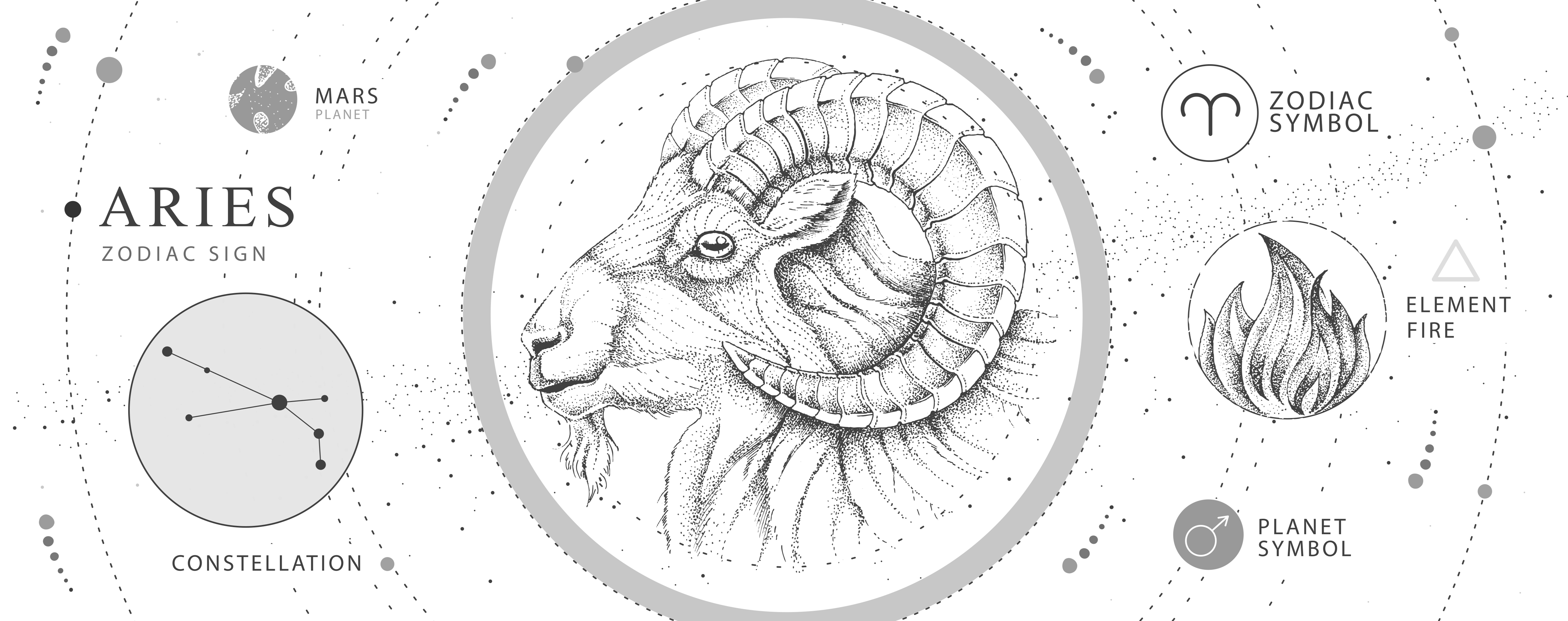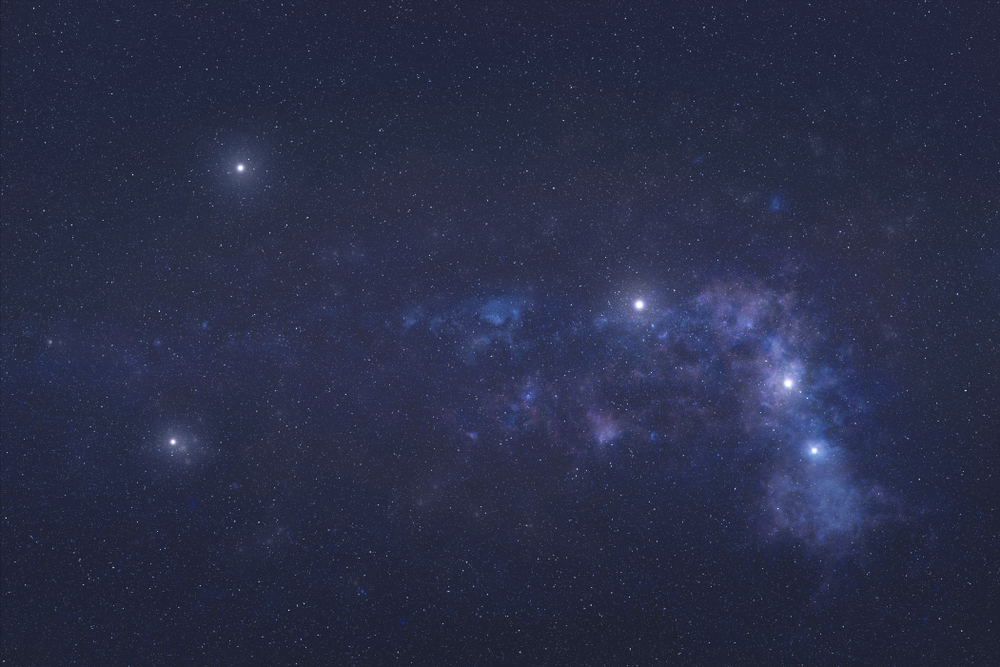Whether you're a budding astronomer or just someone who loves looking up at the stars, the Aries constellation has a lot to offer. In this guide, we’ll explore everything you need to know about the Aries constellation, from its stars and mythology to how you can find it in the sky.
Jump to:
What is the Aries Constellation Known For?

Aries is one of the 88 modern constellations and has been recognised since ancient times. Located in the Northern Hemisphere, it is best known for its symbolic representation of a ram. Aries is a small but significant constellation, notable for being the first sign of the zodiac, marking the beginning of the astrological year.
Recommended for you!
Best SellersThe Ram: Aries Star Sign
The symbol of Aries is a ram, specifically the ram with the golden fleece from Greek mythology. This symbol is not only important in astrology but also in various cultural and historical contexts. People born under the Aries star sign are often described as energetic, assertive, and pioneering, much like the characteristics of a ram.
How to Find Aries in the Sky

Aries is best viewed in the Northern Hemisphere. Here's a step-by-step guide to help you find Aries in the night sky:
- Find a Dark Spot: Light pollution can make it difficult to see constellations. Choose a location away from city lights for the best view.
- Look for Taurus and Pisces: Aries is situated between the constellations of Taurus and Pisces. Finding these larger constellations first can help you locate Aries.
- Identify the Stars in Aries: Aries contains a few notable stars, such as Hamal, Sheratan, and Mesarthim. These stars form a recognisable pattern that resembles a ram's horns.
When Can You See the Aries Constellation in the UK?
The best time to observe the Aries constellation in the UK is during the autumn and early winter months, from late October to early December. During these months, Aries is visible in the evening sky, making it easier for stargazers to spot.
What is the Best Time to See the Aries Constellation?
The optimal time to see Aries is during its peak visibility in the autumn and early winter months. Specifically, late October to early December provides the best viewing opportunities in the UK. During this time, Aries is high in the sky during the evening, making it easier to spot.
How to Locate the First Point of Aries
The First Point of Aries is a crucial reference in astronomy, marking the position of the vernal equinox. Although the position has shifted due to the precession of the equinoxes, the name remains. To locate it, you can use star charts or astronomy software that marks the celestial equator and the ecliptic path of the Sun.
For those new to the hobby of stargazing, a star map or an astronomy app can significantly improve your experience. These resources can assist in identifying Aries and understanding the constellations that surround it. Here are some tips to help you get the most out of your stargazing sessions:
- Star Map: Get acquainted with a star map that displays the constellations as they truly appear in the sky. This will guide you on where to look and set your expectations for when you find Aries.
- Astronomy App: Numerous free and premium apps are available that can help you pinpoint stars, planets, and constellations simply by aiming your smartphone at the sky. Apps such as Star Walk, SkyView, and Stellarium are particularly user-friendly for beginners.
- Optimal Viewing Conditions: Choose a night with clear skies and as little light pollution as possible. Nights around the new moon are best, as the moon's dimness allows the stars’ light to shine through more brightly.
Aries Constellation Stars

Aries is home to several notable stars, each with unique characteristics and historical significance. Let's take a look at the key stars that form the Aries constellation.
Hamal
Hamal, also known as Alpha Arietis, is the brightest star in the Aries constellation. It is an orange giant located about 66 light-years from Earth. Hamal is often the starting point for identifying Aries in the night sky.
Sheratan
Sheratan, or Beta Arietis, is a binary star system located around 60 light-years away. It is the second brightest star in Aries and is part of the "horns" of the ram.
Mesarthim
Mesarthim, or Gamma Arietis, is a binary star system known for its historical significance. It was one of the first double stars to be discovered through a telescope.
Botein
Botein, also known as Delta Arietis, is a giant star situated approximately 168 light-years from Earth. It contributes to the outline of the ram's body in the constellation.
Bharani
Bharani, or 41 Arietis, is another important star in Aries. It is a white star that adds to the constellation's overall brightness and can be found relatively close to Hamal.
Lambda Arietis
Lambda Arietis is a relatively faint star but is part of the intricate pattern that makes up the Aries constellation. Located about 129 light-years from Earth, it is part of the ram's hindquarters.
Want to put your knowledge of Astrology to the test?
Centre of Excellence has you covered.
Sample the first 2 modules of our Astrology Diploma Course for FREE!
Aries in Mythology
The mythology of Aries is rich and fascinating. According to Greek myhtology, the ram with the golden fleece was sent by the gods to rescue Phrixus and Helle, the children of King Athamas and Queen Nephele. The ram flew them to safety, and after its death, the fleece was placed in a sacred grove, guarded by a dragon. This myth was popularised by the story of Jason and the Argonauts, who set out on a quest to retrieve the Golden Fleece.
What are 10 Facts About Aries?
- First Point of Aries: The "First Point of Aries" is where the Sun crosses the celestial equator at the vernal equinox, marking the start of spring.
- Zodiac Sign: Aries is the first sign of the zodiac.
- Size: Aries is the 39th largest constellation, covering 441 square degrees.
- Brightest Star: Hamal is the brightest star in Aries.
- Meteor Showers: The Aries constellation is associated with the Delta Arietids and Epsilon Arietids meteor showers.
- Ancient Recognition: Aries was one of the 48 constellations listed by the 2nd-century astronomer Ptolemy.
- Symbol: The symbol for Aries is the ram, representing courage and initiative.
- Location: Aries is located between Pisces to the west and Taurus to the east.
- Binary Stars: Aries contains several notable binary stars, including Sheratan and Mesarthim.
- Cultural Significance: Aries has been important in various cultures, symbolising different mythological and astrological concepts.
Recommended for you!
Best SellersFrequently Asked Questions About the Aries Constellation
What is the Aries constellation known for?
The Aries constellation is known for its representation of a ram and its significance as the first sign of the zodiac, marking the beginning of the astrological year.
Where is the Aries constellation located?
Aries is located in the Northern Hemisphere, between the constellations of Pisces and Taurus.
How many stars are in the Aries constellation?
Aries consists of several notable stars, including Hamal, Sheratan, Mesarthim, Botein, Bharani, and Lambda Arietis.
How far away are the stars in the Aries constellation?
The stars in the Aries constellation are located at varying distances from Earth. For example, Hamal is about 66 light-years away, Sheratan is around 60 light-years away, and Botein is approximately 168 light-years away.
Can Aries be seen from the Southern Hemisphere?
Aries is primarily visible in the Northern Hemisphere. It can be seen from the Southern Hemisphere, but it appears lower in the northern sky and is more challenging to observe.
Study Astronomy for £29
At the Centre of Excellence, we offer an Astronomy Diploma Course that will expand your knowledge of the night sky. For a limited time, you can enrol for just £29! Learn more about the stars, constellations, and the universe with our fascinating online course.













